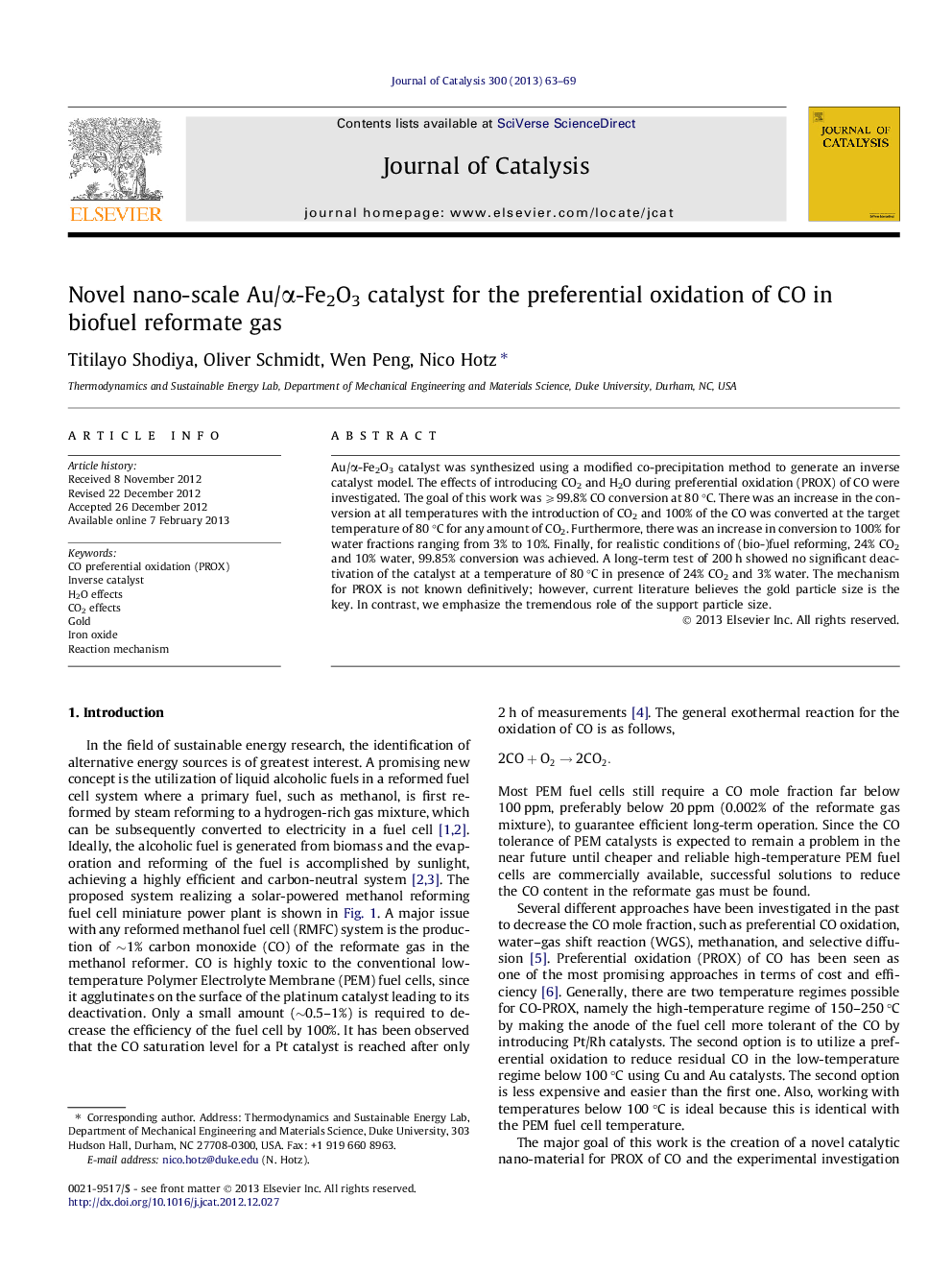| Article ID | Journal | Published Year | Pages | File Type |
|---|---|---|---|---|
| 61352 | Journal of Catalysis | 2013 | 7 Pages |
Au/α-Fe2O3 catalyst was synthesized using a modified co-precipitation method to generate an inverse catalyst model. The effects of introducing CO2 and H2O during preferential oxidation (PROX) of CO were investigated. The goal of this work was ⩾99.8% CO conversion at 80 °C. There was an increase in the conversion at all temperatures with the introduction of CO2 and 100% of the CO was converted at the target temperature of 80 °C for any amount of CO2. Furthermore, there was an increase in conversion to 100% for water fractions ranging from 3% to 10%. Finally, for realistic conditions of (bio-)fuel reforming, 24% CO2 and 10% water, 99.85% conversion was achieved. A long-term test of 200 h showed no significant deactivation of the catalyst at a temperature of 80 °C in presence of 24% CO2 and 3% water. The mechanism for PROX is not known definitively; however, current literature believes the gold particle size is the key. In contrast, we emphasize the tremendous role of the support particle size.
Graphical abstractUnder the most realistic conditions, the Au/α-Fe2O3 inverse catalyst, synthesized using a modified co-precipitation method, achieves 99.85% CO conversion (τ) at the target temperature of 80 °C. This is the highest conversion documented for these conditions realistic for fuel reformate gas.Figure optionsDownload full-size imageDownload high-quality image (125 K)Download as PowerPoint slideHighlights► Inverse catalyst with smaller Fe2O3 support particles offers catalytic advantages. ► For 25% CO2, catalyst achieved 100% conversion at 80 °C. ► For 10% H2O, catalyst achieved 100% conversion at 80 °C. ► For 10% H2O and 24% CO2, catalyst achieved 99.85% conversion at 80 °C. ► The catalyst shows no deactivation (>99.9% conversion) during a test of 200 h.
